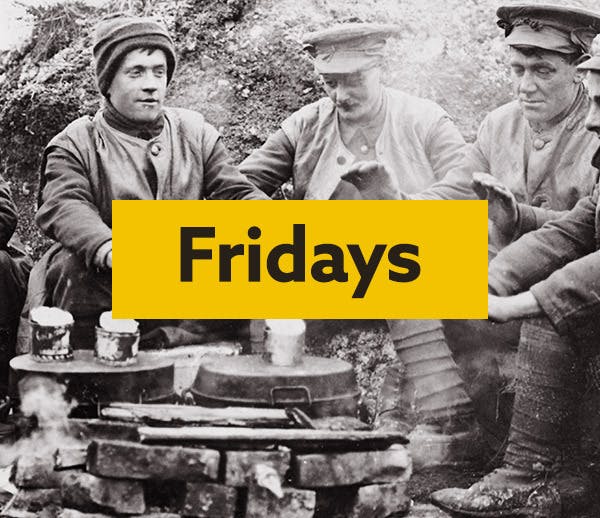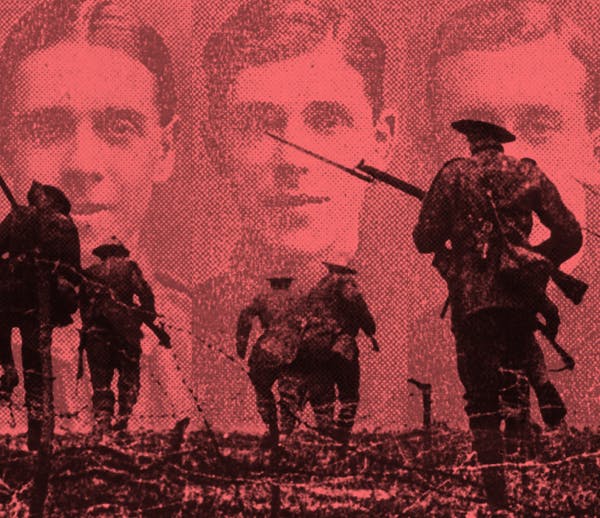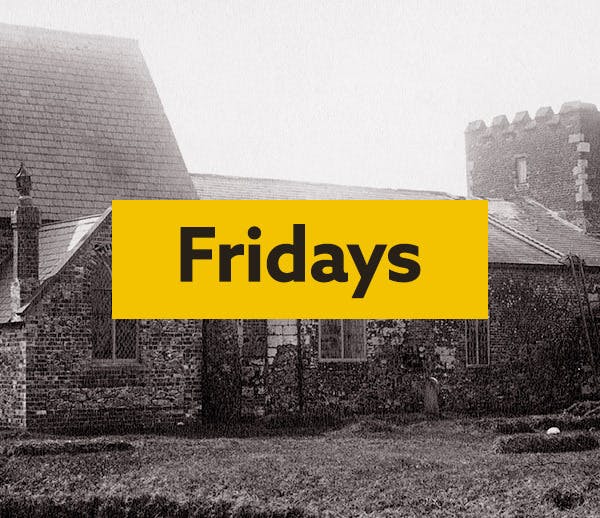Amazing vintage military photos provide a unique look at Canadian troops during World War 2
3-4 minute read
By Jen Baldwin | May 15, 2020
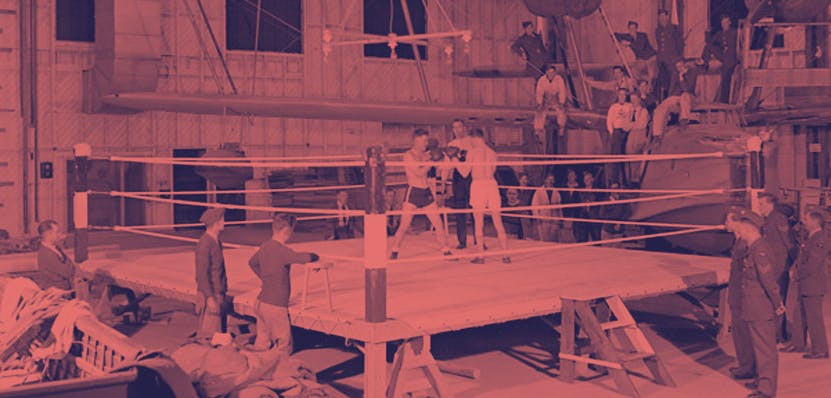
Using the Findmypast Photo Collection, Jen Baldwin takes a closer look at life during the war effort across Canada and beyond.
May 16 is an important day in World War 2 history. It's the day in 1943 when the Warsaw Ghetto was cleared of its Jewish population by German police and security forces. In 1941, it’s the night when German aircraft gave one last Blitz raid over Birmingham before relocating their forces elsewhere, marking the end of these frightening attacks.
And in 1944, it’s the day when the 1st Canadian Corps was ordered to advance on German defensive lines and the Battle of the Liri Valley was fought. This marked the first time since 1918 that a Canadian Corps went to war on a European battlefield.

Snipers of the Royal 22e Régiment, Liri River valley, Italy, May 23, 1944.
(L-R): Private Amalie Dionne, Lance-Corporal Paul Fortin, Privates Henri Thibault, Guste Bernier, Harry Gilman, Robert Riral. View full-size in the Findmypast Photo Collection.
Just two weeks later, over 15,000 members of the Canadian Army, hundreds of members of the Royal Canadian Air Force, and crews of 60 vessels of the Royal Canadian Navy would participate in the D-Day invasion of Normandy alongside 150,000 Allied forces.
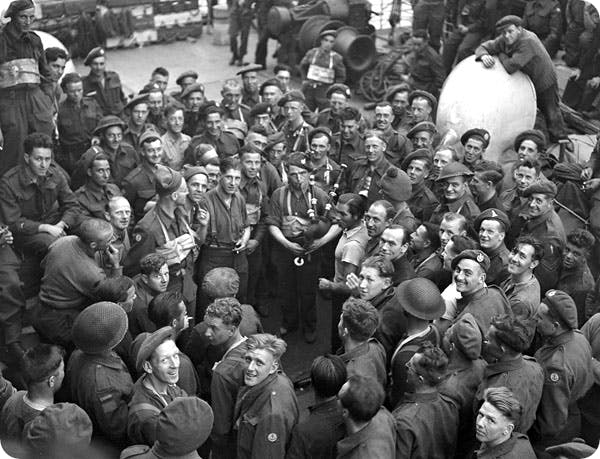
An unidentified Canadian soldier playing the bagpipes aboard a ship en route to France on D-Day, 6 June 1944. View full-size in the Findmypast Photo Collection.
May 16 is an important day but it's likely that every day from 1939 to 1945 was an important day. These are the days when millions of stories were made and lost. These are the days when entire countries worked together towards victory.
Canada in World War 2
Canada declared war on September 10, 1939, and eventually involved virtually every person living across the country in one way or another. They would ultimately build the world’s third-largest navy and participate in some of the most famous and infamous campaigns of the Second World War.
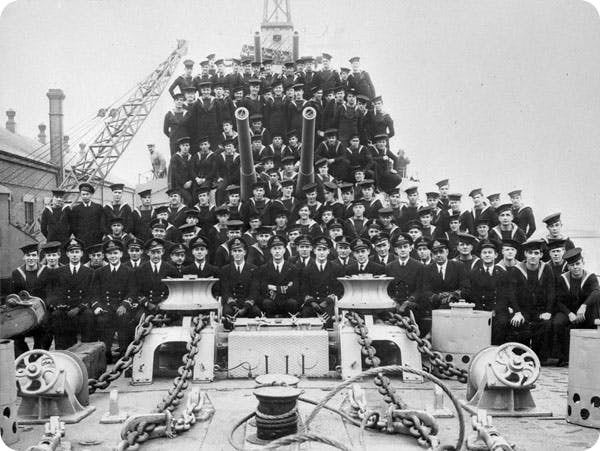
Ship’s Company of the destroyer H.M.C.S. Athabaskan, Plymouth, England, April 1944. View full-size in the Findmypast Photo Collection.
The story of the Canadian war effort goes well beyond battles, however. These stories crisscross the landscape and include women in manufacturing roles, many for the first time; training centers across Canada that prepared units for battles overseas; and a prisoner of war camp near the mountains of Alberta.
Prisoner of war camps in Canada
Lethbridge and Medicine Hat were the temporary homes of 12,500 German POWs after their defeat in North Africa and elsewhere. Smaller camps were located in other provinces. Protected under the terms of the Geneva Convention, they were mainly guarded by veterans from the First World War. The Medicine Hat camp included the most severe Nazi POWs who were usually removed from the general population. Most of the prisoners were returned to Germany following the war, however, many immigrated back to Canada in later years.
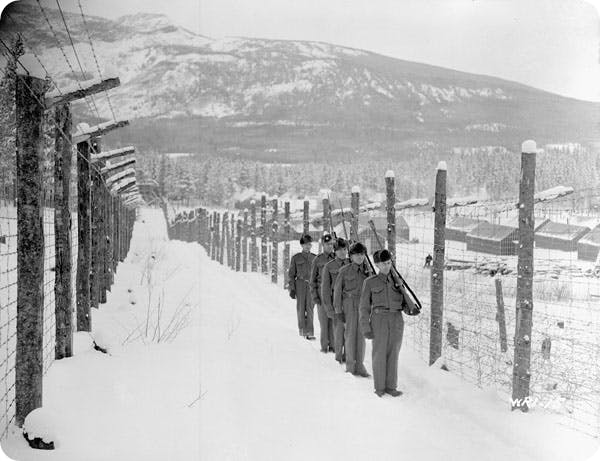
Camp 130, a prison for internees and enemy merchant seaman, Kananaskis, Alberta, Canada, ca. 1940. View full-size in the Findmypast Photo Collection.
In the Findmypast Photo Collection, you'll uncover captivating snapshots of fishing vessels turned merchant marines along the Pacific coast and athletic competitions organized to boost morale.
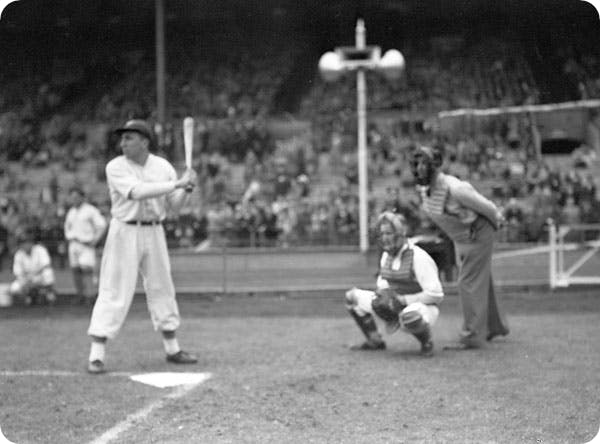
Canada-United States servicemen’s baseball game at Wembley Stadium, London, England, August 3, 1942. View full-size in the Findmypast Photo Collection.
You'll find the stories of men serving in the CANLOAN scheme, the women who helped war brides through the Canadian Wives Bureau, and unit mascots like Wallace, living their best lives.
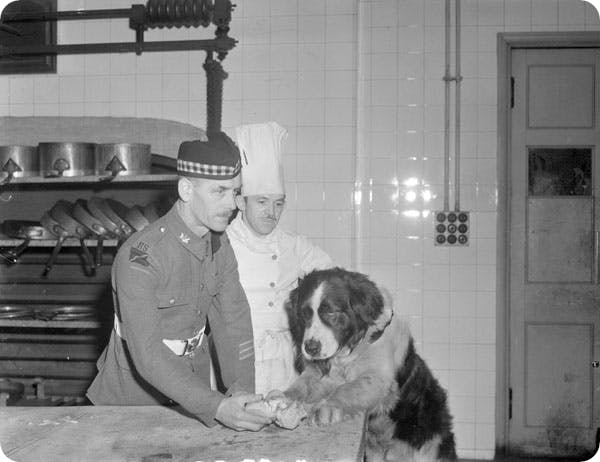
Wallace, the mascot of the 1st Battalion, The Canadian Scottish Regiment, being fed at a ceremonial dinner, London, England, December 6, 1945.
(L-R): Private R. Shergold and Chef G. Leroux. View full-size in the Findmypast Photo Collection.
What was the CANLOAN scheme?
In 1942, Canada was fighting only in Italy and had a surplus of officers. On the other hand, Britain was fighting on various fronts around the world, suffering a shortage. As a result, Canadian junior officers were able to volunteer to serve with the British Army "on loan.” They were part of these British units in every way and given special service numbers with the prefix CDN. To see these servicemen's records, use this prefix when searching the military service & conflict records on Findmypast.
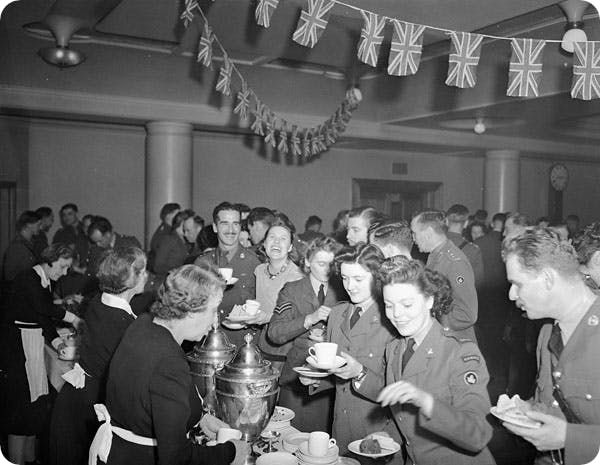
First annual reunion of CANLOAN officers, Royal Empire Society, London, England, April 14, 1945. View full-size in the Findmypast Photo Collection.
The activities and life of thousands of individuals were captured by the Canadian Army Film & Photo Unit to tell hundreds of stories in each frame; the very human story of a tragic war. A story of perseverance and determination.
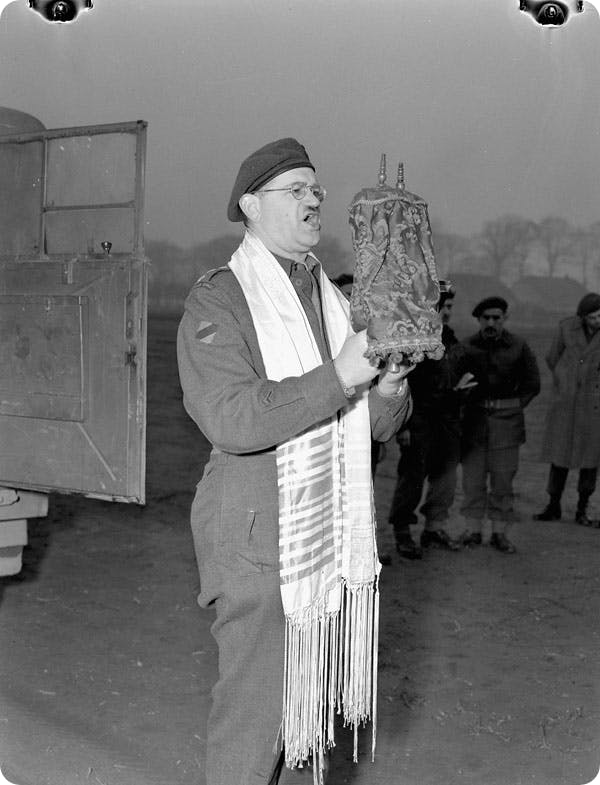
H/Captain Samuel Cass, a rabbi, conducting the first worship service celebrated on German territory by Jewish personnel of the 1st Canadian Army near Cleve, Germany, March 18, 1945. View full-size in the Findmypast Photo Collection.
You can search for various units, known battles and campaigns, locations across Europe and the Atlantic naval front to find images that tell the story of your family. Remember to scroll through using the previous/next function to see similar images.
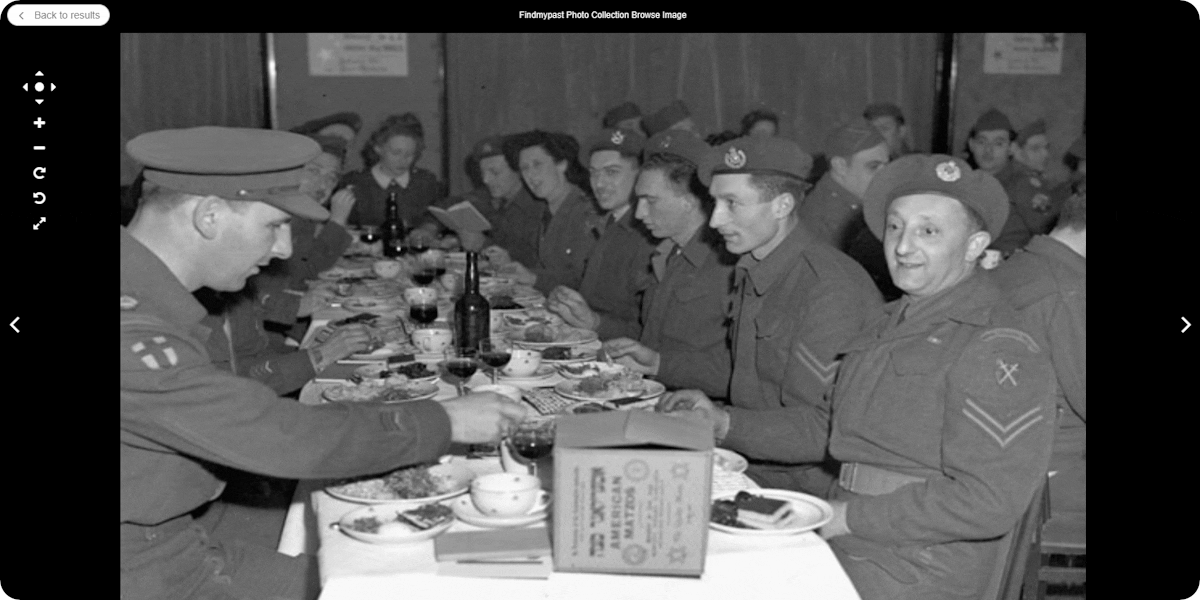
Many of the Canadian photos include full captions and names of those pictured, so use a surname in the keyword search box and be sure to read through the transcription to get all the details.
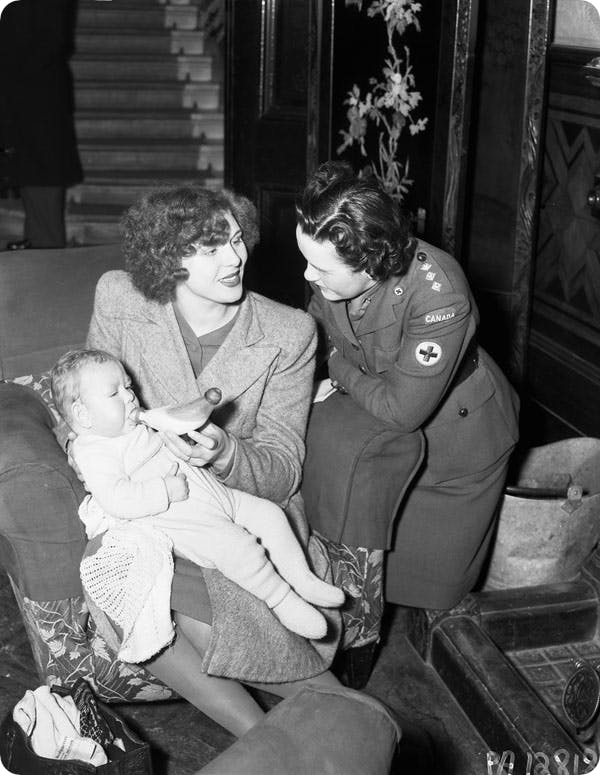
Assistant Matron Kathleen Hurley helping war bride Mrs. H.F. Whitmore and her son Mervin, who are en route to Canada a The Maple Leaf Club, London, England, December 4, 1944. View full-size in the Findmypast Photo Collection.
Even if these photos don't include your ancestor, they certainly give you a better understanding of military life throughout World War 2. If you have old family photos of your own you'd like to share, we'd love to see them. Tag your pictures on social media with #WhereWillYourPastTakeYou? for a chance to be featured.

